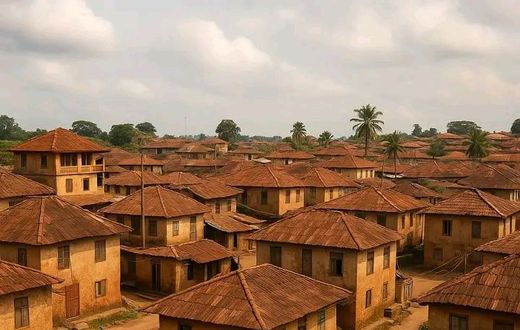History
Fact Check: Araromi-Oke, The Yoruba Village That Vanished Without a Trace in 1957?

Sixty-eight years ago, a haunting tale emerged from the heart of Yorubaland. According to oral accounts, an entire village named Araromi-Oke, once nestled near the borders of present-day Oyo, Osun, and Ekiti states, mysteriously disappeared. The settlement, known for farming and hunting, was said to have emptied overnight—without war, famine, or disease to explain the sudden absence.
When neighbouring villagers visited, the story goes, they found eerie signs of life abruptly abandoned. Cooking fires still smouldered, palm wine sat fresh in calabashes, and clothes hung on lines. Yet no trace of the inhabitants remained. No bodies. No blood. No footprints of migration. Just silence.

Theories Behind the Vanishing
Over the decades, elders, historians, and sceptics have wrestled with the riddle of Araromi-Oke. Three main theories often surface:
1. The Curse of the Deity
In Yoruba oral tradition, some believe the villagers violated a covenant with Ogun, the god of iron and war. Hunters in the community were known to honour Ogun with rituals. When the sacred laws were allegedly broken, legend claims Ogun’s wrath consumed the village whole.
2. The Land Reclaimed Its People
Another belief holds that Araromi-Oke was built on forbidden land. In Yoruba cosmology, the earth gives life but can also reclaim it. To some, the disappearance was not an exodus but the land itself swallowing its people.
Recommended News:
- Adewale Adesanya – The Rising Star in Remo’s Political Renaissance
- APC’s Elegbeji Clinches Remo Bye-Election as Olapeju Ayodele, Jaddo, Olododo Deliver Strongholds
- Veteran Nollywood Actor Chief Kanran Passes Away at 7
3. Migration and Politics
Sceptics argue that the tale may simply mask a migration. The late 1950s were politically tense, and economic struggles may have forced relocation. But critics counter: where are the records? British colonial officers documented even small village movements, yet no file mentions Araromi-Oke’s vanishing.
Fact or Folklore?
Despite the chilling details, no historical evidence supports the claim. Colonial archives from the 1950s contain no record of a mass disappearance. Academic research also offers no confirmation. What exists instead are oral traditions, repeated across Yoruba communities and embellished with each retelling.

Adding to the confusion, many Yoruba towns bear the name Araromi—such as Araromi Oke-Odo, Araromi Owu, and Araromi Obu. Stories from these places may have blended into a single “vanishing village” legend.
Why the Story Endures
The enduring power of the Araromi-Oke mystery lies in Yoruba oral storytelling, where myths often teach lessons about the sacredness of land, divine justice, and community values. Its imagery—food left on fire, goats bleating in empty compounds—anchors the story in everyday reality, making it feel almost plausible.
Similar legends exist worldwide. The lost Roanoke Colony in America and the mysterious disappearance of people at Angikuni Lake in Canada mirror the same themes of vanishing settlements. These parallels lend Araromi-Oke’s tale an eerie sense of possibility.
The Verdict
Ultimately, Araromi-Oke’s disappearance is best understood as folklore amplified by time and the internet, not as a verified historical event. The story survives not in archives but in memory, myth, and cultural imagination—reminding us of how legends shape identity as much as facts do.





















